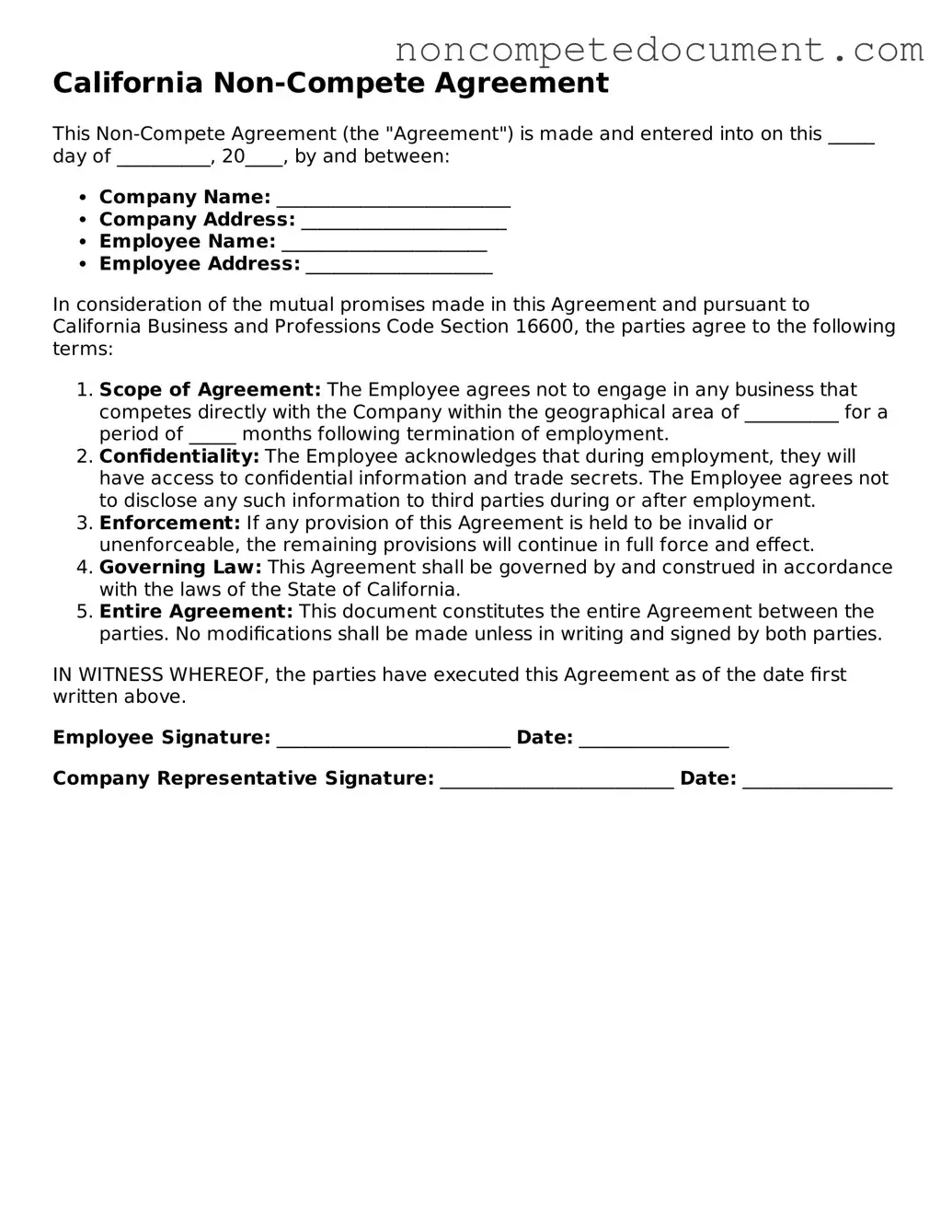When filling out the California Non-compete Agreement form, individuals often overlook several key aspects that can lead to complications later on. One common mistake is failing to read the entire document thoroughly. Many people rush through the process, missing important clauses or stipulations that could significantly impact their rights and obligations.
Another frequent error is neglecting to provide accurate personal information. This includes not only names but also addresses and contact details. Inaccuracies can lead to confusion and may hinder the enforcement of the agreement.
Some individuals mistakenly believe that a non-compete agreement is universally enforceable. In California, such agreements are generally not favored, especially if they restrict an individual's ability to work in their chosen field. This misunderstanding can result in wasted time and effort on an unenforceable contract.
Additionally, people often forget to specify the duration of the non-compete clause. Leaving this section blank or vague can lead to disputes regarding how long the restrictions apply. Clear timelines help both parties understand their commitments and expectations.
Another common oversight is failing to define the geographic scope of the non-compete. Without clear boundaries, the agreement may be deemed overly broad, which can render it unenforceable. It is crucial to limit the area in which the restrictions apply to ensure they are reasonable.
Some individuals may not consider the potential consequences of signing the agreement. They may not fully understand how it could affect future employment opportunities. Taking the time to evaluate the long-term implications is essential for making informed decisions.
In addition, individuals sometimes skip the step of consulting with a legal professional. This can lead to misunderstandings about the rights being waived and the implications of the agreement. Seeking legal advice can provide clarity and protect one's interests.
Another mistake involves not keeping a copy of the signed agreement. It is vital to retain a personal record of the document for future reference. This can help resolve any disputes that may arise later.
People may also overlook the importance of discussing the agreement with their employer. Open communication can clarify expectations and ensure that both parties are on the same page. Misunderstandings can often be avoided through dialogue.
Finally, individuals sometimes neglect to consider the possibility of amendments or updates to the agreement. Life circumstances can change, and it is important to revisit the terms periodically to ensure they remain relevant and fair.
